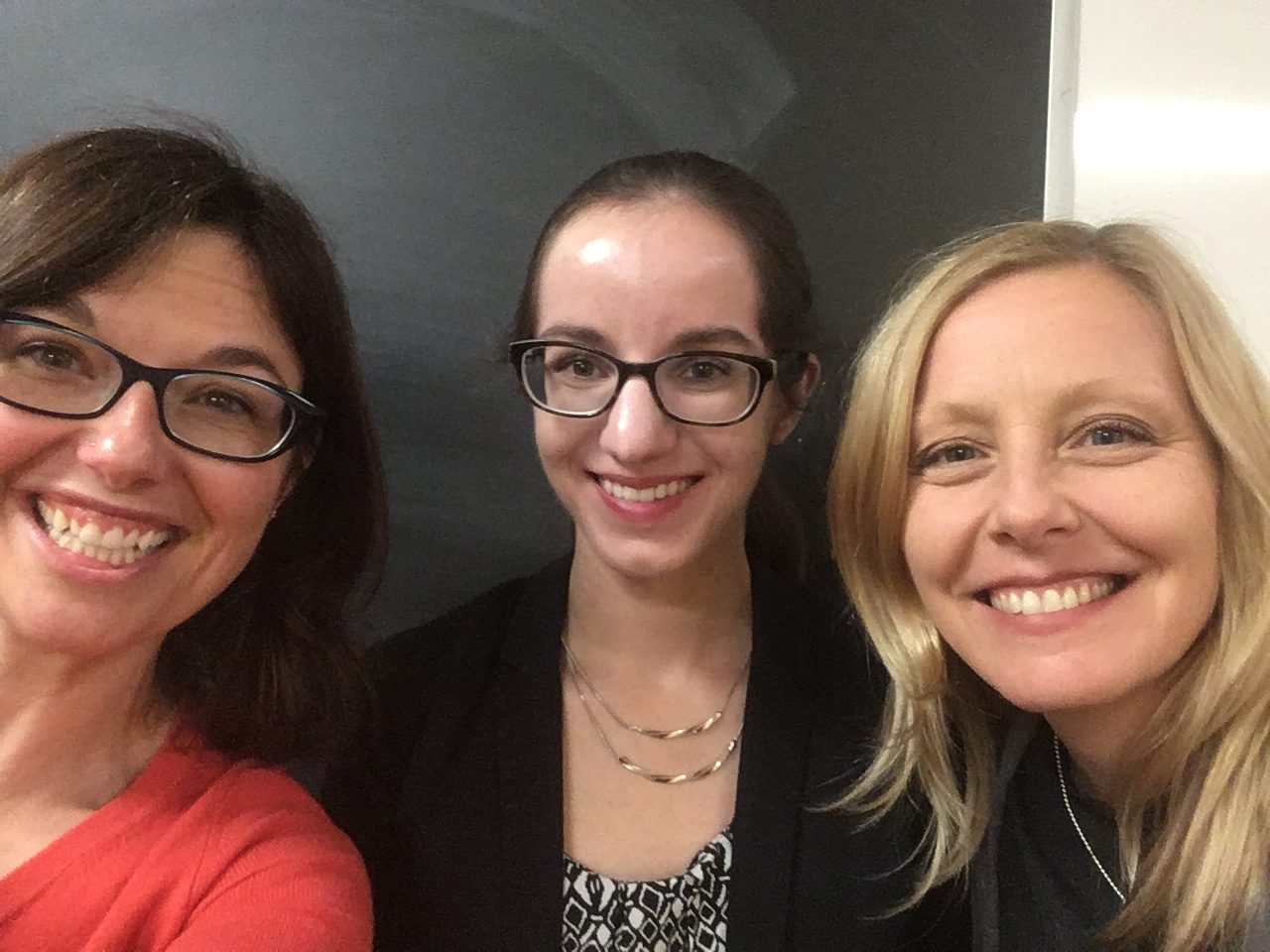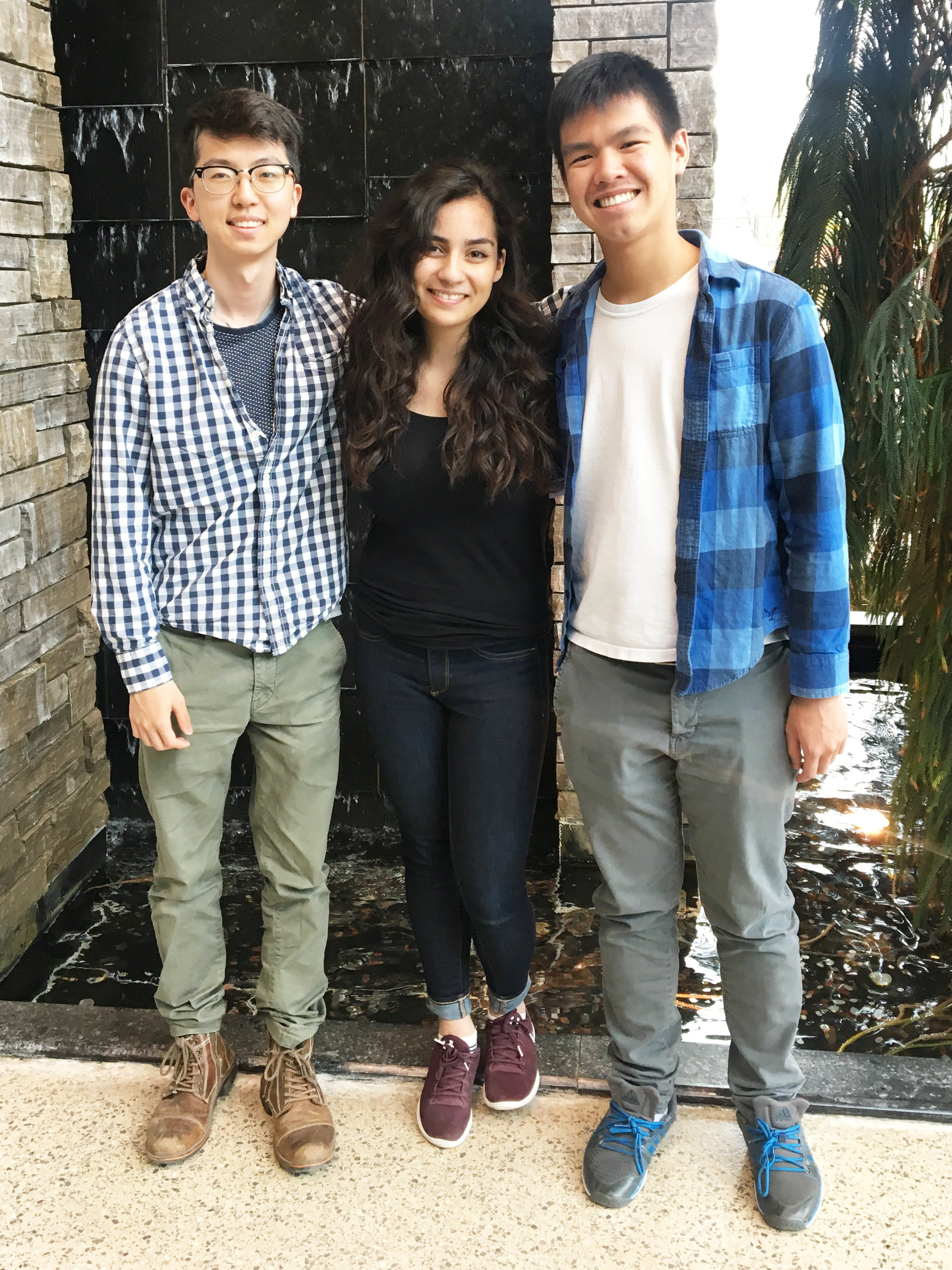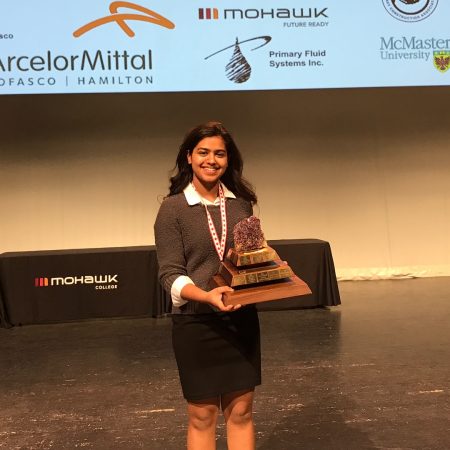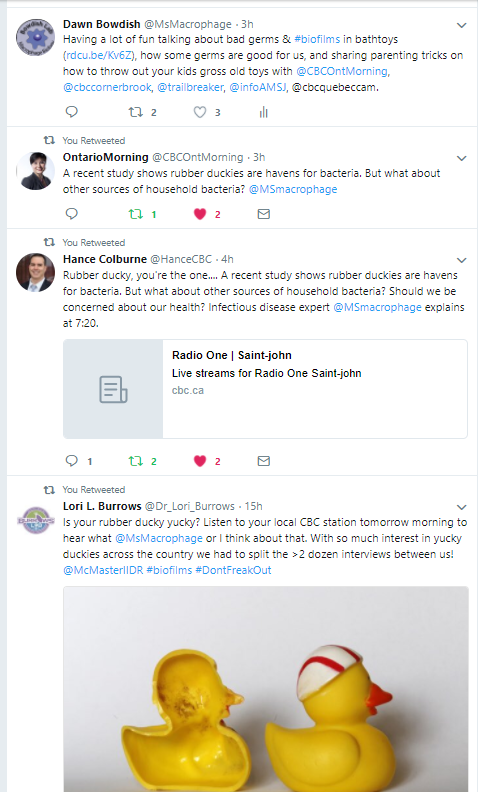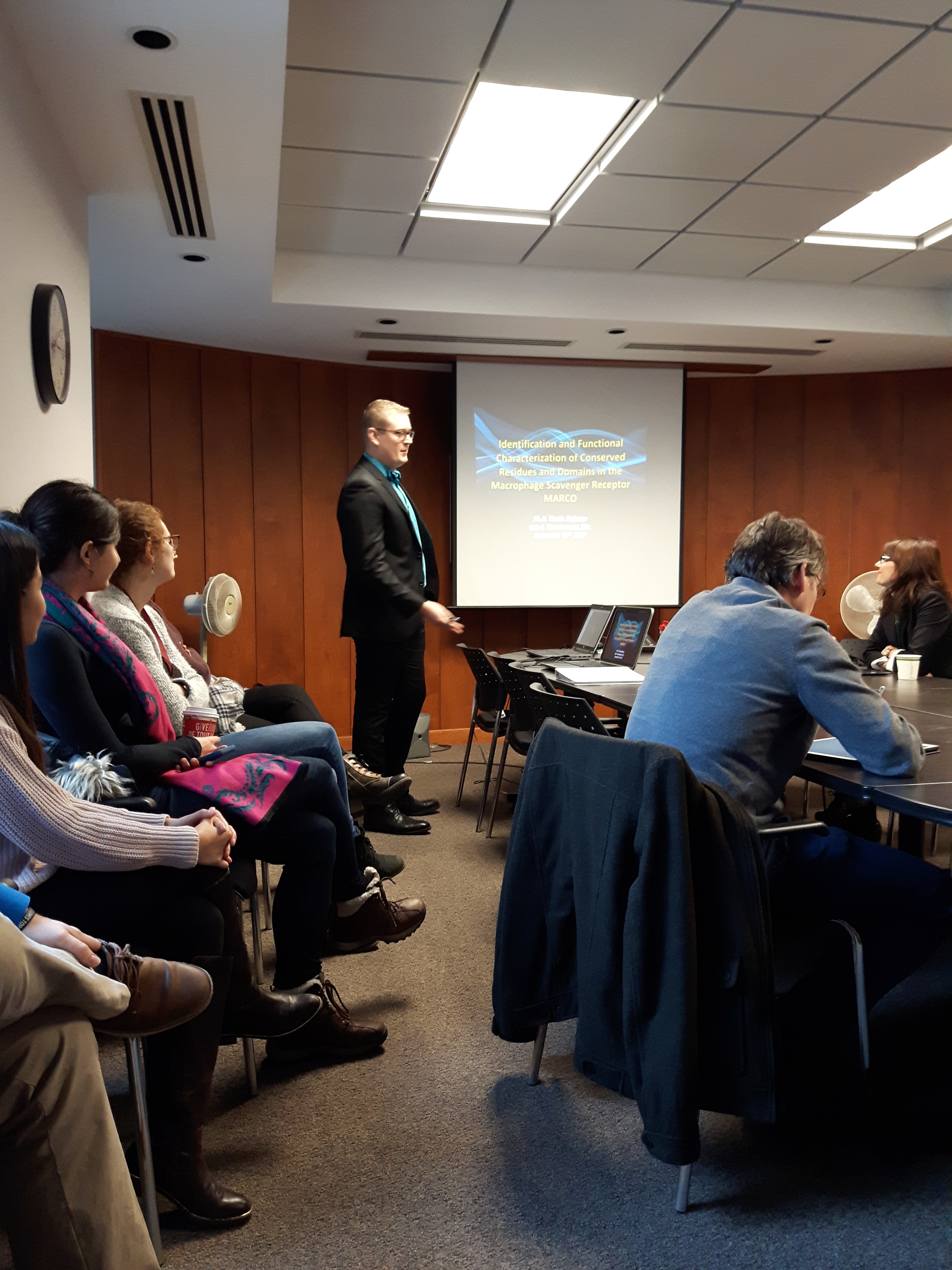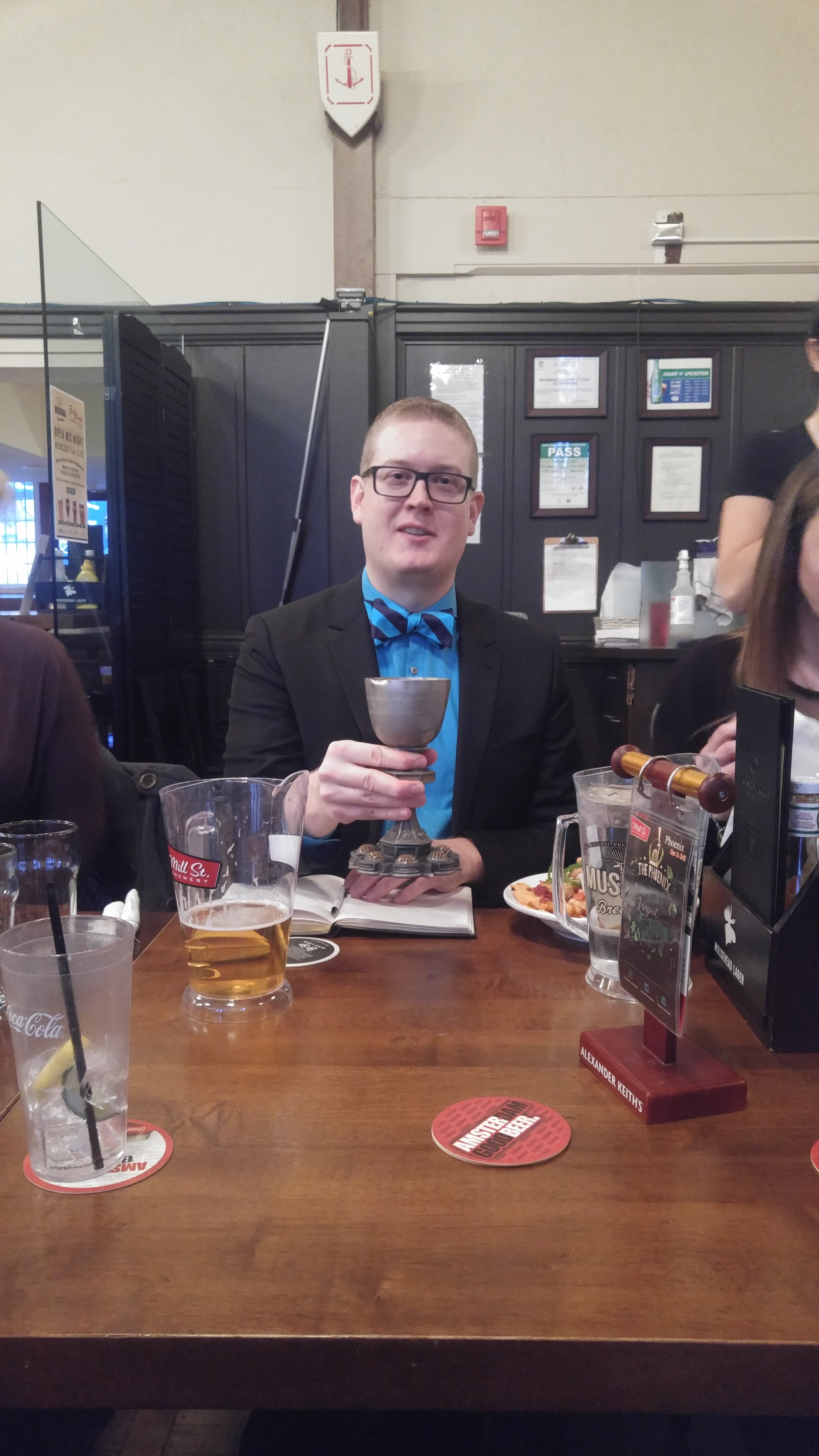Category Archives: News
The Bowdish lab welcomes summer students Danny, Mina, Joseph and Melodie and congratulates them on their scholarship successes.
The Bowdish lab is pleased to welcome a recent biochemistry graduate and IIDR summer scholarship winner, Joseph Chon, Mina Sadeghi a MIRA (McMaster Institute for Research on Aging) summer student, Danny Ma a MIRA and NSERC-USRA winner and Melodie Kim, a BHSc summer studentship recipient. We’re thrilled to have such a talented group of students working with us this summer.
Congrats to high school student Anika Gupta as she heads off to the international science fair!
The Bowdish lab was very proud to host Anika Gupta, a high school student, for her Bay Area Science and Engineering Fair (BASEF) project.
Her project was entitled “Quantifying Lung Macrophages to Understand Increased Susceptibility to Bacterial Pneumonia with Age.”
Anita won the Dr. Doyle Biology Award for the best Biology project, a Gold merit award as well as the Pinnacle Award for the Third Best in Fair and a sponsored Trip Award to compete in the Intel International Science and Engineering Fair in Pittsburgh, Pennsylvania in May!
Way to go Anika!
See her featured in the Hamilton news here.…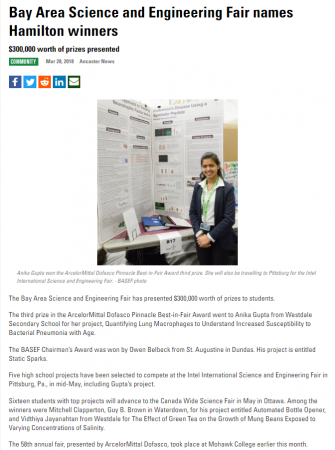
Dr. Bowdish gives a lecture for kids “Who’s got more cooties – boys or girls?”
Dr. Bowdish explains what cooties are, how the microbes that live on and in us can be friends and foes and describes how differences in infections and health between boys and girls, men and women are sometimes due to biology and sometimes due to behaviour.
Read the article summarizing the event here.
To see Dr. Bowdish put on a macrophage cape and teach the school kids the difference between a commensal, a pathobiont and a pathogen by dressing up their teachers, watch here…..
Grace Teskey (MSc student) featured by MacART (McMaster Autism Research Training)
Grace aims to determine whether there are subtle changes in the white blood cells of people with neurodevelopmental disorders.
Read the full transcript of her interview for MacART here.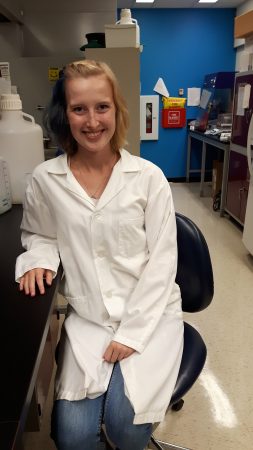
Dawn talks about germs in the home with CBC radio.
A recent study investigated how dirty children’s bathtoys can be. Dawn and Dr. Lori Burrows commented on this during a number of syndicated CBC radio shows. Read more here…
‘Yucky duckies’ only of concern for the very young, says researcher
Dawn participates in the Steeltown Stairclimb to raise money for the Ontario Lung Association
On February 3rd 2018, Dawn will be doing the Steeltown Stairclimb to raise money for the Lung Association.
To donate, see her page
http://support.on.lung.ca/site/TR/StepUpampBreathe/StepUpClimbEvent?px=2041173&pg=personal&fr_id=1160
Not only does the Lung Association support research into lung infections and lung health but it advocates for the 1 in 5 Ontarians living with lung disease. One of our major successes this year was passing Bill 71 in provincial parliament which means we now have a Lung Advisory board consisting of patients, caregivers, clinicians and importantly, researchers, to create a Lung Health Action plan and tangible goals to improve lung health in our province. Please consider a donation!
Here’s the CHCH news clip on the event:
Dr Bowdish discusses protecting older adults from pneumonia by making vaccination a family affair on CTV Toronto.
https://www.ctvnews.ca/health/how-flu-shots-for-the-young-can-prevent-pneumonia-among-seniors-1.3736385
Dr. Bowdish talks to Zoomer Radio about how older adults can protect themselves from pneumonia.
It’s a very serious illness, especially for #Zoomers @libbyznaimer talks with expert @MsMacrophage Dawn Bowdish, Chair of #Aging & Immunity @McMasterU to find out everything we need to know about #Pneumonia at 12 and we take your calls as well at: 416-360-0740 or 1-866-740-4740
— Fight Back w/ Libby (@fightbacklibby) December 27, 2017
Listen to the interview here.
Kyle Novakowski is the Bowdish lab’s newest PhD!
Kyle Novakowski successfully defended his thesis “IDENTIFICATION AND FUNCTIONAL CHARACTERIZATION OF CONSERVED RESIDUES AND DOMAINS IN THE MACROPHAGE SCAVENGER RECEPTOR MARCO” to become the Bowdish lab’s 4th PhD student. He’ll be joining Turnstone Biologics as a PhD scientist. We wish him very well in his future endeavours. Congratulations Dr. Novakowski!


